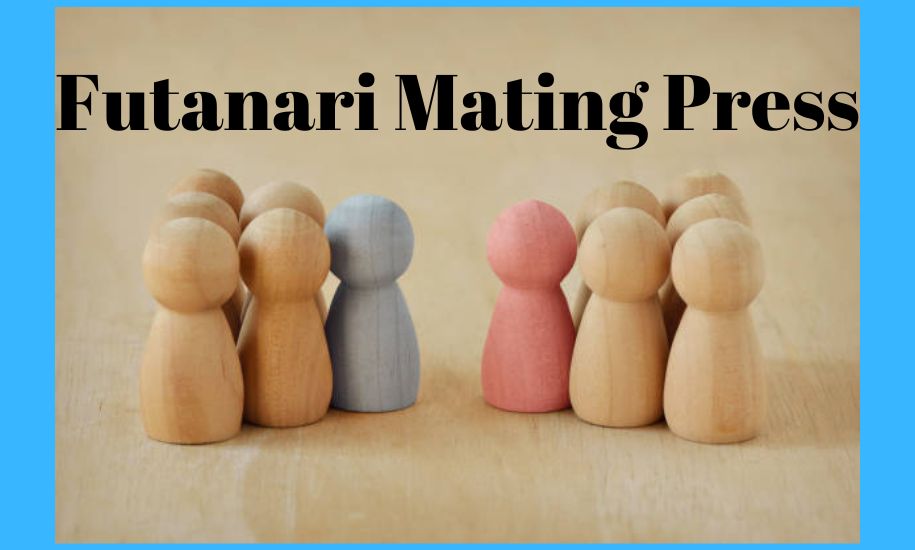Positioning in Futanari Mating Press: Understanding the Position, Themes, and Techniques

The Futanari Mating Press is a unique and symbolic sexual position frequently featured in a specific niche of Japanese anime and manga. This niche often portrays characters with both male and female anatomical features, blending themes of gender fluidity, intimacy, and power dynamics. In this article, we delve deeper into the cultural representation of the futanari genre, explore the intricacies of the mating press position, and examine its symbolic relevance in both media and storytelling.
Introduction to Futanari Mating Press
The term Futanari, rooted in Japanese culture, refers to a genre of characters that merge features traditionally associated with both male and female genders. These characters embody themes of androgyny, gender fluidity, and the breaking of traditional boundaries.
The Mating Press, as depicted in futanari media, serves as a powerful symbol of emotional closeness, dominance, and connection. It combines physical intimacy with intense emotional exchanges, often becoming a key moment in futanari narratives. These portrayals invite viewers to engage with complex ideas surrounding identity, gender dynamics, and human relationships.
Positioning in Futanari Mating Press

Basics of the Futanari Mating Press
The Futanari Mating Press involves one character, often the dominant futanari, taking the lead by positioning themselves on top of their partner, who lies on their back. This position highlights themes of control, deep penetration, and close physical contact, often portrayed as fostering an intense emotional and physical bond between characters.
Key elements of this position include:
- Top Partner Dominance: The top partner assumes control of the movement, dictating the depth and rhythm of the interaction.
- Close Physical Contact: The position emphasizes body-to-body proximity, creating a sense of vulnerability and trust.
- Emotional Connection: The face-to-face setup allows for eye contact and expressions of affection, intensifying the emotional dynamic.
Variations and Dynamics in Futanari Mating Press
The futanari genre frequently explores variations of the mating press to reflect diverse themes of intimacy and power. These variations may involve:
- Leg Positioning Adjustments: The receiving partner’s legs can be placed on the top partner’s shoulders or wrapped around their waist to create different angles and dynamics.
- Support Props: Pillows or cushions may be depicted under the receiving partner to enhance comfort and penetration angles.
- Narrative Contexts: The setting, mood, and storyline often influence the tone of the mating press, ranging from tender and emotional to passionate and dominant.
What is a Mating Press?
At its core, the mating press is a sexual position where one partner lies on their back while the other partner lies on top, facing them. This setup allows for deep penetration, face-to-face interaction, and an intense emotional connection. The top partner controls the depth and pace of penetration, leveraging their body weight for stability.
While this position is commonly referenced in real-life intimacy, it has gained notable prominence in anime and manga due to its symbolic and aesthetic appeal. The Japanese Mating Press, Mating Press Reverse, and Mating Press Pose are popular variations that further emphasize its versatility and narrative potential.
Futanari Mating Press: 10 Key Benefits
The futanari version of the mating press is often used to convey several benefits, both narratively and symbolically:
- Deep Emotional Intimacy: Highlights the closeness between characters through eye contact and physical proximity.
- Dominance and Submission Dynamics: Reflects power shifts and roles in relationships.
- Exploration of Gender Fluidity: Challenges traditional gender roles by portraying characters with blended identities.
- Artistic Representation: Offers an opportunity for artists to creatively explore themes of identity and connection.
- Plot Advancement: Often serves as a pivotal moment in character development or narrative progression.
- Aesthetic Appeal: Creates visually striking scenes that captivate audiences.
- Cultural Significance: Offers insight into Japanese storytelling and its approach to complex themes.
- Flexibility in Storytelling: Allows creators to depict various moods, from tender intimacy to passionate dominance.
- Audience Engagement: Resonates with viewers exploring similar themes of gender and identity.
- Educational Opportunity: Opens discussions on gender diversity and fluidity within a cultural framework.
Understanding the Broader Context
The Futanari Mating Press is not just a physical position but a narrative device used to convey deeper themes. As you explore related topics like the Japanese Mating Press, Mating Press Pose, Mating Press Reverse, and Mating Press Hentai, it becomes evident that these variations contribute to a richer understanding of intimacy and identity in media.
For instance:
- The Japanese Mating Press often emphasizes traditional cultural aesthetics, blending eroticism with subtlety.
- The Mating Press Pose is celebrated for its visual appeal, showcasing close body contact and emotional intimacy.
- The Mating Press Reverse flips the dynamics, allowing the receiving partner to take control, adding layers of versatility.
- Mating Press Hentai and Asian Mating Press reflect regional and cultural nuances, highlighting diverse approaches to intimacy and storytelling.
Tips for Appreciating Futanari Mating Press Representations
- Understand the Cultural Context: Recognize the genre’s origins and its significance in Japanese media.
- Respect Gender Diversity: Approach the topic with sensitivity and an open mind.
- Explore Symbolism: Look beyond the surface to appreciate the narrative and thematic depth.
- Engage Critically: Compare its portrayal with other cultural and media depictions of gender fluidity.
- Foster Discussion: Use this as an opportunity to discuss broader themes of identity and acceptance.
Frequently Asked Questions About Futanari Mating Press
What is the Futanari Mating Press?
It is a sexual position depicted in futanari anime and manga, showcasing themes of dominance, intimacy, and gender fluidity.
How does it differ from a traditional mating press?
While the traditional mating press focuses on physical intimacy, the futanari version incorporates themes of gender identity, artistic representation, and narrative depth.
Why is it significant in futanari media?
The position highlights power dynamics, emotional connection, and the exploration of complex identities, enriching the storytelling experience.
How does it influence perceptions of gender?
By blending traditionally masculine and feminine traits, it challenges binary gender norms and promotes inclusivity and diversity.
What should viewers consider when engaging with this content?
Viewers should be mindful of the cultural context, narrative intent, and broader implications for gender representation in media.
Conclusion
The Futanari Mating Press stands as a multifaceted narrative element within futanari anime and manga, blending physical intimacy with profound explorations of identity and power dynamics. Through its variations, artistic representations, and cultural significance, it opens a window into themes of gender fluidity and human connection. Whether you’re a fan of the genre or exploring it for the first time, understanding the layers behind this position can deepen your appreciation for its role in storytelling.
For more engaging insights, visit Mating Press, where we delve into the fascinating intersections of culture, intimacy, and representation.


